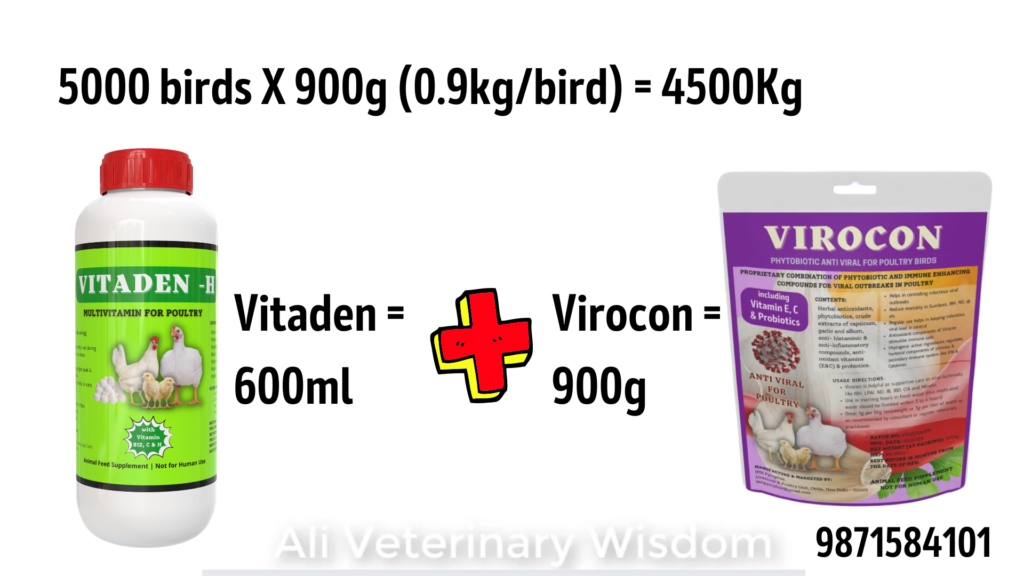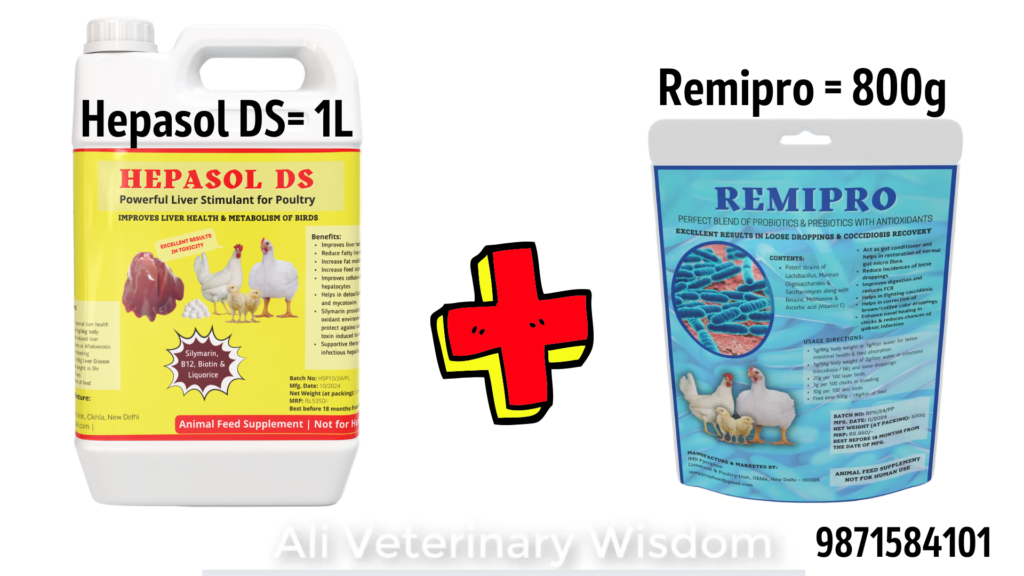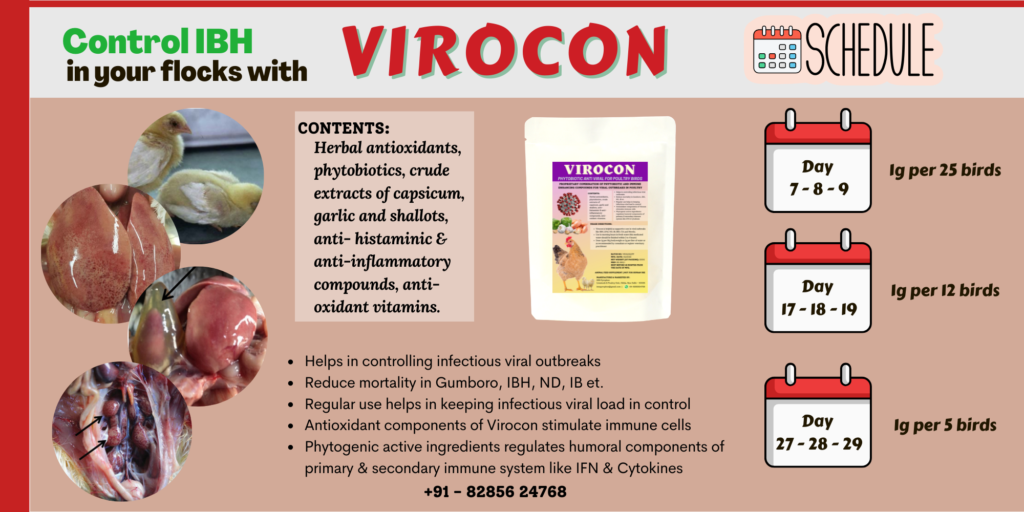Inclusion body hepatitis (IBH)
Viral diseases in poultry are very damaging and cause huge economic losses. IBH is one such disease that young broiler birds start dying with or without any symptoms. There is a sudden onset of mortality, anemia, and hepatitis.
IBH condition is usually seen in broilers of 3 to 7 week of age but it may also seen in layer chicks, older birds and in growers.

IBH is caused by non-enveloped Aviadenovirus this virus is commonly found in the poultry environments and we cannot make poultry house free of it. It is said that immunosuppression caused by circulating strains of Gumboro (Infectious Bursal Disease) virus helps adenovirus to cause Inclusion Body Hepatitis. However, without immunosuppression, the IBH virus still causes disease but doesn’t cause much harm. It has many serotypes and it is difficult to find exact serotypes while diagnosing the disease. More often Fowl Adenovirus A serotype 1 & Celo strain appears to be involved in most of the cases.

Fowl Adenovirus (FAV) is very resistant virus and found in all poultry rearing areas in the world. Virus can survive outside the body for long periods even in dry low pH conditions. In India FAV1, FAV4 and FAV8 serotypes have been identified.
There is a very peculiar pattern of Inclusion Body Hepatitis (IBH) disease in broiler birds
- Sudden onset of mortality
- Mortality gradually rises and reached to peak at 4th day and starts dropping from 5th day (sometimes continues for 2-3 weeks)
- Usually mortality is around 5 to 10% but it can be as high as 30%
- 3-7 week of age birds are mostly affected (its range is from 7d old chicks to 20wk old layers)
- Morbidity is low, varies from 5 – 20% (not many birds get sick)
- Sick birds adopt a particular posture called crouching position with ruffled feathers. These birds usually dies within 48hrs.
- Vents of 10-15% of the birds (breeders) are smeared with feces
- The other birds in the flock usually looks normal or may be slightly depressed
- Feed intake is markedly reduced, shown less than 50% of the intake.
- Drop in egg production is also seen
- FCR and weight hampered
When you open a bird for post mortem you will find
- Pale, friable (easily broken) and swollen liver with mottled appearance due to fine hemorrhagic spots.
- Lobular pattern of liver may become prominent
- Bursa of fabricius may be small and atrophic.
- 25% of the cases shows hydropericardium
- Small or large hemorrhages may be present in the liver and skeletal muscles (that may be confused with Gumboro / IBD)
- Kidneys are swollen, shows superficial hemorrhages and excessive urates in the ureters.
- Anemia & jaundice of the skin, over legs, breast & subcutaneous fat characterized by paleness.
- In some cases bone marrow lesions are more noticeable, bone marrow become thin and watery.
- Paleness of bone marrow is common feature, particularly the bone marrow of ribs.

Treatment of IBH in Poultry
4 Medicines are required to treat IBH, it would not cure IBH but can you big relief in mortality and reduce economic losses
Start with Virocon and Vitaden @ dose rate of 1g per 5Kg body weight virocon and 1ml per 7Kg body weight vitaden. These 2 products mix together and give in 2hr water.
After this Hepasol DS and Remipro @ dose rate of 1g per 4Kg body weight Hepasol DS and 1ml per 5Kg body weight Remipro. These 2 products mix together and give in 2hr water.












